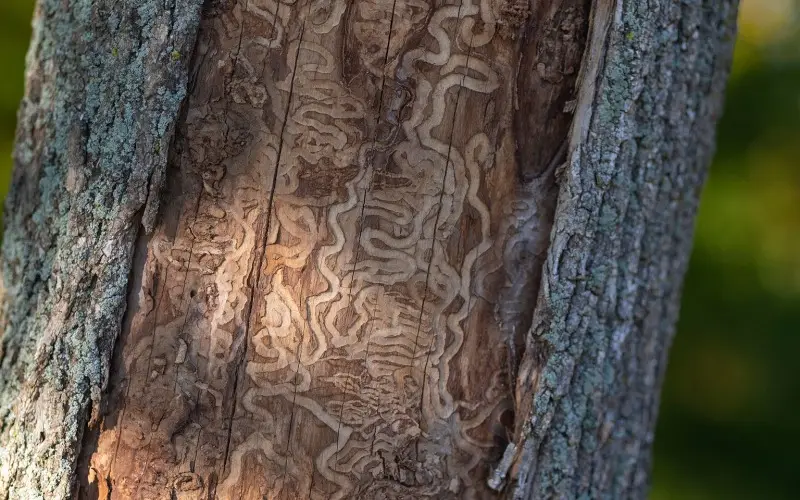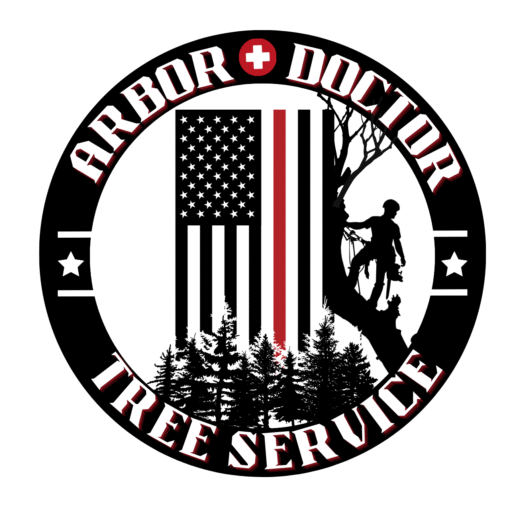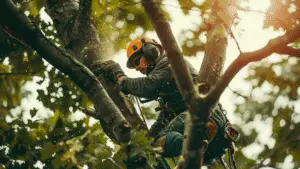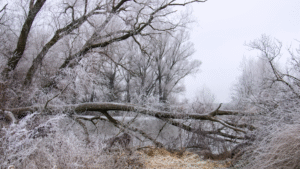How to Spot Emerald Ash Borer Damage: Protecting Denver’s Ash Trees
Denver’s urban forest is a precious asset, and our ash trees play a significant role in its beauty and health. Unfortunately, a silent but deadly threat looms: the Emerald Ash Borer (EAB). This invasive pest can devastate ash trees, often going unnoticed until the damage is severe. Knowing how to spot Emerald Ash Borer damage early is crucial for giving your ash tree a fighting chance.
At Arbor Doctor Tree Service, we’re at the forefront of EAB detection and management in the Denver area. Our certified arborists are experts in identifying the subtle, and not-so-subtle, signs of this destructive insect.
Why Early Detection Matters When You Need to Spot Emerald Ash Borer Damage
EAB larvae feed on the tree’s inner bark, disrupting its ability to transport water and nutrients. This internal damage can go unseen for 2-4 years before outward symptoms become obvious. By the time a tree shows severe decline, it’s often too late for effective treatment. That’s why understanding how to spot Emerald Ash Borer damage in its early stages is so vital.
Key Signs: How to Spot Emerald Ash Borer Damage on Your Ash Tree
Here are the most common indicators that your ash tree might be infested with EAB:
- Canopy Thinning and Dieback:
- What to look for: This is often one of the first visible signs. You’ll notice the upper canopy of the tree starting to thin out, with fewer leaves, especially at the top. Branches may begin to die back from the tips. This progresses as the larvae girdle the tree, interrupting nutrient flow.
- D-Shaped Exit Holes:
- What to look for: As adult EAB beetles emerge from the tree, they chew distinctive, small (about 1/8 inch in diameter) “D”-shaped holes in the bark. These are often found on the trunk or larger branches. While they can be hard to spot from the ground, they are a definitive sign of EAB.
- S-Shaped Larval Galleries Under the Bark:
- What to look for: If you peel back loose or dying bark on an infested ash tree, you might reveal winding, S-shaped tunnels (known as galleries). These are created by the feeding larvae and are packed with sawdust-like frass (insect excrement). Seeing these galleries is a clear indication of EAB activity.
- Increased Woodpecker Activity:
- What to look for: Woodpeckers are natural predators of EAB larvae. If you notice an unusual increase in woodpecker activity on your ash tree, or see patches of bark that have been flaked off by woodpeckers, it could be a sign that they are feeding on a hidden EAB infestation.
- Epicormic Sprouting (Suckers/Water Sprouts):
- What to look for: Stressed ash trees, including those infested with EAB, often try to survive by sending out new shoots from the trunk or around the base of the tree. These “suckers” or “water sprouts” are a desperate attempt by the tree to produce foliage when its main canopy is dying back.
- Vertical Bark Splitting:
- What to look for: In some cases, as the tree tries to heal over the larval galleries, the bark may split vertically, revealing the winding tunnels underneath.
What to Do If You Suspect EAB Damage
If you observe any of these signs on your ash trees, do not wait! Prompt action is critical.
- Contact a Certified Arborist: The first and most important step is to call a qualified, ISA-certified arborist like those at Arbor Doctor Tree Service. We have the expertise to accurately diagnose EAB, distinguish its damage from other tree problems, and recommend the most effective course of action.
- Do Not Move Firewood: If your tree is infested, do not move any wood from it. This is a primary way EAB spreads to new areas.
- Treatment Options: Depending on the severity of the infestation and the tree’s overall health, preventative or remedial treatments may be possible. Our arborists can discuss the best options for your specific situation.
Knowing how to spot Emerald Ash Borer damage empowers you to protect your valuable ash trees. Be vigilant, inspect your trees regularly, and if you see anything suspicious, call us, Arbor Doctor Tree Service, immediately. Together, we can work to preserve Denver’s beautiful urban forest. For more information, visit our page about Emerald Ash Borer Treatment and Prevention.




